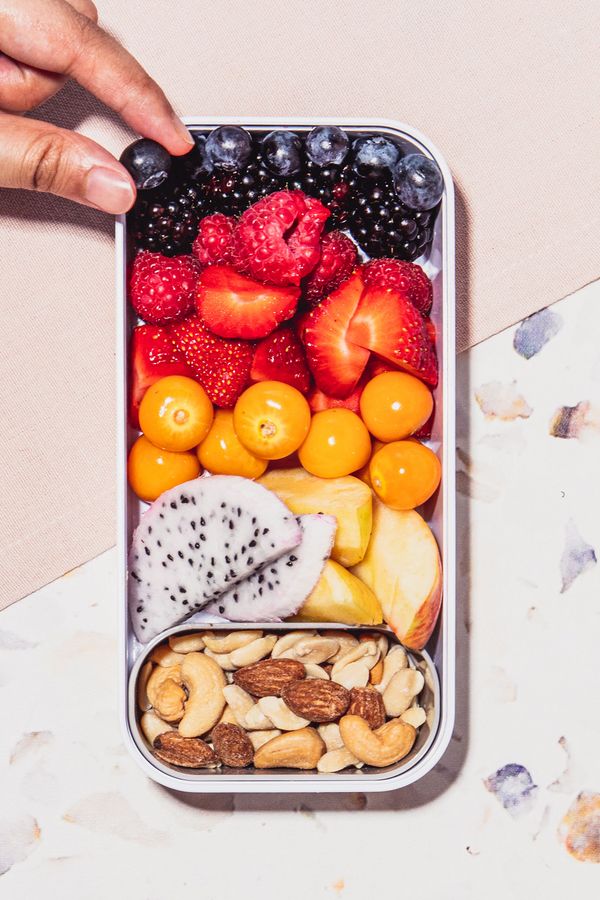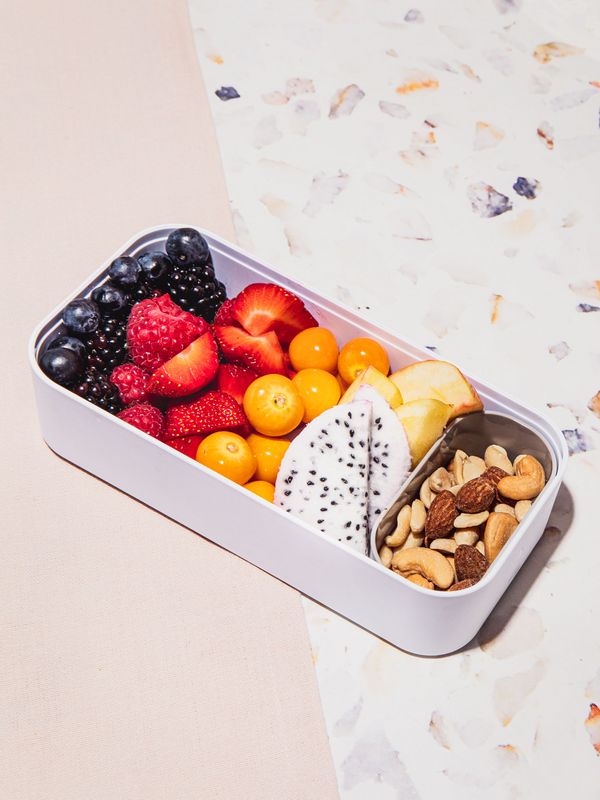
This article is in collaboration with Kitchen Stories.
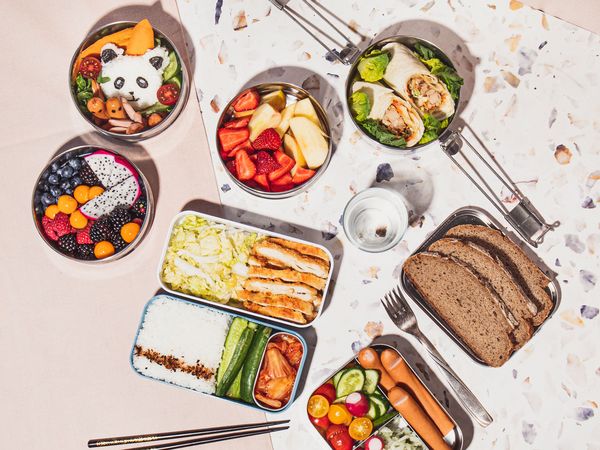
What is a bento box, anyway
As you may encounter it in your local Japanese restaurant, bento is a staple Japanese packed lunch. It is the favorite take-out food sold in railway stations and convenience stores all around Japan, and can also be enjoyed packed up and taken to go from home. Bentos are seen in picnics under cherry blossoms, in schools, or on lunch tables in offices. People like it both for its utility and its kawaii (the Japanese culture of cuteness). It might be best known in its Japanese form, but different forms of bento have been in East Asia for years.
A bento box has several different compartments made for perfectly portioned rice, meat, cooked vegetables, or pickles. A typical Japanese bento typically has onigiri (Japanese rice balls), tamagoyaki (rolled Japanese omelettes), sushi, karaage (fried meat) and/orkatsu(chicken or pork cutlets).
The bento box, deconstructed
Let’s break it down and get to the essential spirit of the bento—the balanced, varied, and visually appealing composition. There are two approaches to achieve an ultimately satisfying bento: to have everything balanced nutritionally, or to focus in on the visual contrast and let the nutrition come naturally.
Approach 1: Balanced nutrition
If we generalize bento compartments, a thoughtfully planned bento should contain carbs, protein, vegetables, and sometimes fruit. A recommended ratio of these four parts should be 3:2:1:1, which can always be adjusted to your own diet. The bento box is perfect for portion control and the contents are highly flexible, depending on the occasion, or simply what you have in the fridge. Here are some options that will work well in your personalized bento for an inviting lunch “al desko.”
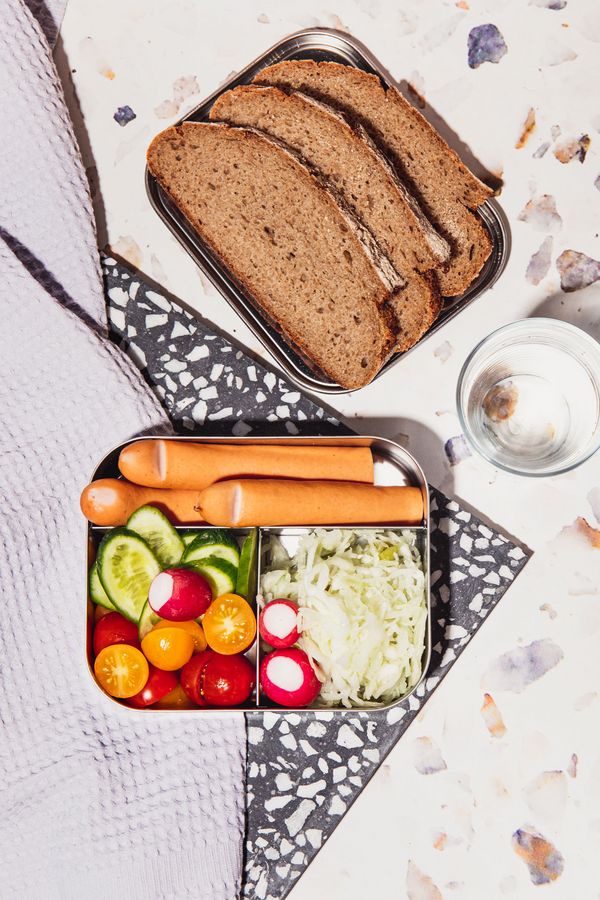
Carbs:
x Grains: rice, quinoa, millet
x Pasta: penne or fusilli are great due to their size and shape
x Bread, crackers, or pancakes
x Others: potatoes, sweet potatoes
Proteins:
x Meat: chicken, pork, beef, meatballs, sausages, ham
x Seafood: salmon, shrimp
x Others: beans, chickpeas,eggs,tofu, nuts
Vegetables and fruits:
There are not many limitations when it comes to choice bento vegetables and fruits. Try and choose ones that will keep their texture, like asparagus, broccoli, or peas. If you like to pack fresh leafy salads, make sure that they are completely dry before packing, or simply wait to pack that compartment until morning.
Don’t miss out on adding pickles ot your bento, which give an extra pop of flavor. Kimchi, pickled cucumbers, or sauerkraut are great.
Approach 2: Visual contrast
We taste with our eyes first, so besides the variety of different food groups in your bento, a texture and color are equally important things to consider. It is scientifically proven that color does affect our perception of how a food tastes, so thinking from a color perspective is not only a playful way to pack a bento box, but may even result in a better tasting one! In many cases, more colors guarantee a more diverse meal. You don’t have to go full-on to assemble a rainbow bento every time (although it is fun), but simply try to incorporate 3 or more colors to your box for a properly tasty visual effect.
X Red & Orange: tomatoes, red bell peppers, carrots, strawberries
X Pink: salmon, shrimp, ham
X Yellow: eggs, potatoes, yellow bell peppers, corn
X Purple: eggplant, red cabbage, blackberries, grapes
X Black: black sesame seeds, black rice, nori
X Green: asparagus, spinach, broccoli, peas, zucchini
X White: rice, tofu, radishes
Sometimes, adding small decorative details will give the whole box a more lively look. In Japan, it is common to put a pickled plum (Umeboshi) in the middle of the rice compartment. The same idea could be done with a sprinkle of black sesame seeds, furikake, shichimi, or nori for added color and texture in the rice. For a western variation, try fresh herbs, raisins, half of a cherry tomato, or thinly sliced radish—nuts or seeds could also be added.
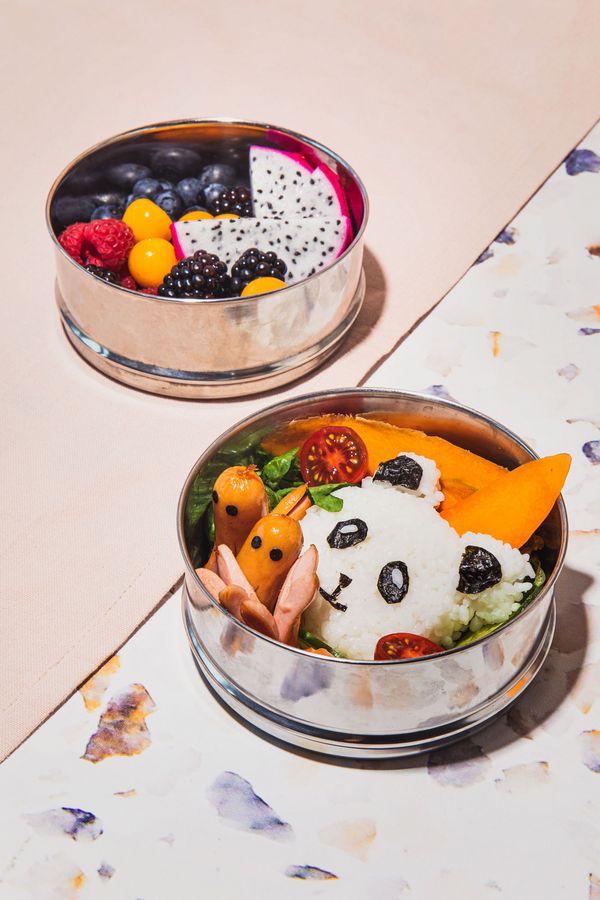
Bento box tips and tricks
Just like other forms of packed lunches, meal prep is still a practical topic when it comes to bento boxes. This article serves as an in-depth guide about how to meal-prep, but my go-tos from the top of my head are always rice, tofu, eggs, and seasonal vegetables.
To pack the bento box, make sure to separate the wet (my suggestion is to avoid liquidy foods entirely) from the dry, as well as the cold from the warm. Most bento or lunch boxes come in divided containers, but if not, silicone (or paper) muffin liners can work as great holders. Layering lettuce under rice or meat could also divide flavors, and (bonus!) is edible. Pack everything tightly so it won’t shift around during transportation.
Making bento may seem time consuming, but my suggestion is to stick to simple cooking methods: set up the rice to cook and, in the meantime, cook your main dish. While those things cool, fill up the rest of the bento with fresh ingredients or pickles. Make the most use of leftovers (hail fried rice!) and even pre-made goods. It takes me about 30 min. to finish packing a bento—not so bad, right?
